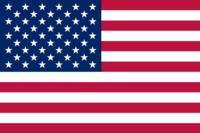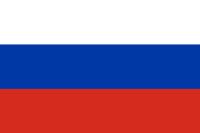
Food Packaging and UV Inks
inkworld2024-04-07 08:50
Food packaging has been an area of both opportunity and some concern for energy-curing inks and coatings.
Food packaging has been an area of both opportunity and some concern for energy curing, as regulatory efforts are ever increasing and new technologies emerge.
Anna Niewiadomska, global marketing manager for narrow web, Flint Group, noted that Flint Group has seen growth in using energy-curable inks for indirect food packaging applications.
“This is, in part, driven by an increased awareness in the value chain about what inks to use (or not use) and the introduction of new and ‘safer’ raw materials,” added Niewiadomska. “Furthermore, the accelerated adoption of UV LED and dual curing technologies ensures an even higher assuredness of cure due to the consistent UV output of the UV lamps.”
Jonathan Graunke, VP of UV/EB technology and assistant R&D director for INX International Ink Co., noted that energy curable technologies have been able to grow in food packaging applications.
“Traditional, single-use beverage containers are a good example,” noted Graunke. "By moving to all plastic and improving their recycling capabilities, UV is a natural fit for printing."
“We see a growing interest in the use of food compliant inks (i.e. low migration inks) for UV and LED flexo applications,” Fabian K?hn, global head of narrow web product management at Siegwerk, said. “However, from a global perspective, it is more a transition from non-low migration to low migration inks than a growth of the energy curing segment.
“Today, many food packages are still printed with unsuitable UV inks,” K?hn added. “But brand owners across the globe have already started to strictly enforce the use of food compliant inks, not only in the energy curing segment. Upcoming regulations such as the German Printing Ink Ordinance will also have a strong influence on the future of energy curing inks for food packaging applications. In sheetfed printing, there is still a competition with conventional offset printing. At the moment, printers are tending to choose CO over UV for food packaging, and the upcoming regulations could further strengthen this trend.”
“Energy-curing technology is widely used in food packaging applications and is expected to continue to grow,” said Hideyuki Hinataya, GM of the Overseas Ink Sales Division for T&K Toka.
Tim Smith of Zeller+Gmelin’s Product Management Team noted that energy-curable technologies have indeed made significant inroads into indirect food packaging applications with careful consideration of safety and regulatory compliance.
“We continue to see increasing demand for low-migration ink systems,” said Smith. “This growth is often driven by the technologies' ability to offer high-quality printing, durability, and resistance to chemicals and abrasion, which are crucial for indirect contact food packaging. Advances in formulations have addressed these safety concerns, enabling broader acceptance of energy-curable technologies in food packaging.”
Derrick Hemmings, product manager, screen, energy curable flexo, LED North America, Sun Chemical, reported that Sun Chemical has seen significant interest in energy curable inks for primary and secondary packaging for the food industry.
“Electron beam inks are especially useful for food packaging as they do not utilize photoinitiators and thus meet the more stringent low migration requirements,” he said. “However, UV and LED inks are also growing in popularity in the food packaging market. A shift toward LED curing under nitrogen is a trend which may grow because it reduces the photoinitiator level and thus can provide lower migration.”
More Hzinfo
- Dr. Zhou Jun: Crafting Superior Expertise for Premium Equipment(Yizumi)
- In 2024, Yizumi Holdings Co., Ltd. (YIZUMI) Die Casting Machine Division celebrated its 20th anniversary. It began as a small team of five and has grown into a thriving group with over 800 employees.
-
2025-07-05
- NORSOK M501 Certification Imminent for Kuangshun Photosensitivity Domestic Heavy-Duty Anticorrosive Coatings Break into Marine Engineering Market
- Kuangshun Photosensitivity announced that its eco-friendly graphene-modified heavy-duty anticorrosive coating has entered the final stage of NORSOK M-501 international certification.
-
2025-07-04
- SONGWON Appoints New Leader Business Unit Tin Intermediates / PVC
- In his new role as Leader of the Tin Intermediates and PVC Business Unit, Choi will oversee the strategic direction and spearhead new business development.
-
2025-07-04


 English
English 简体中文
简体中文 Русский
Русский إنجليزي
إنجليزي